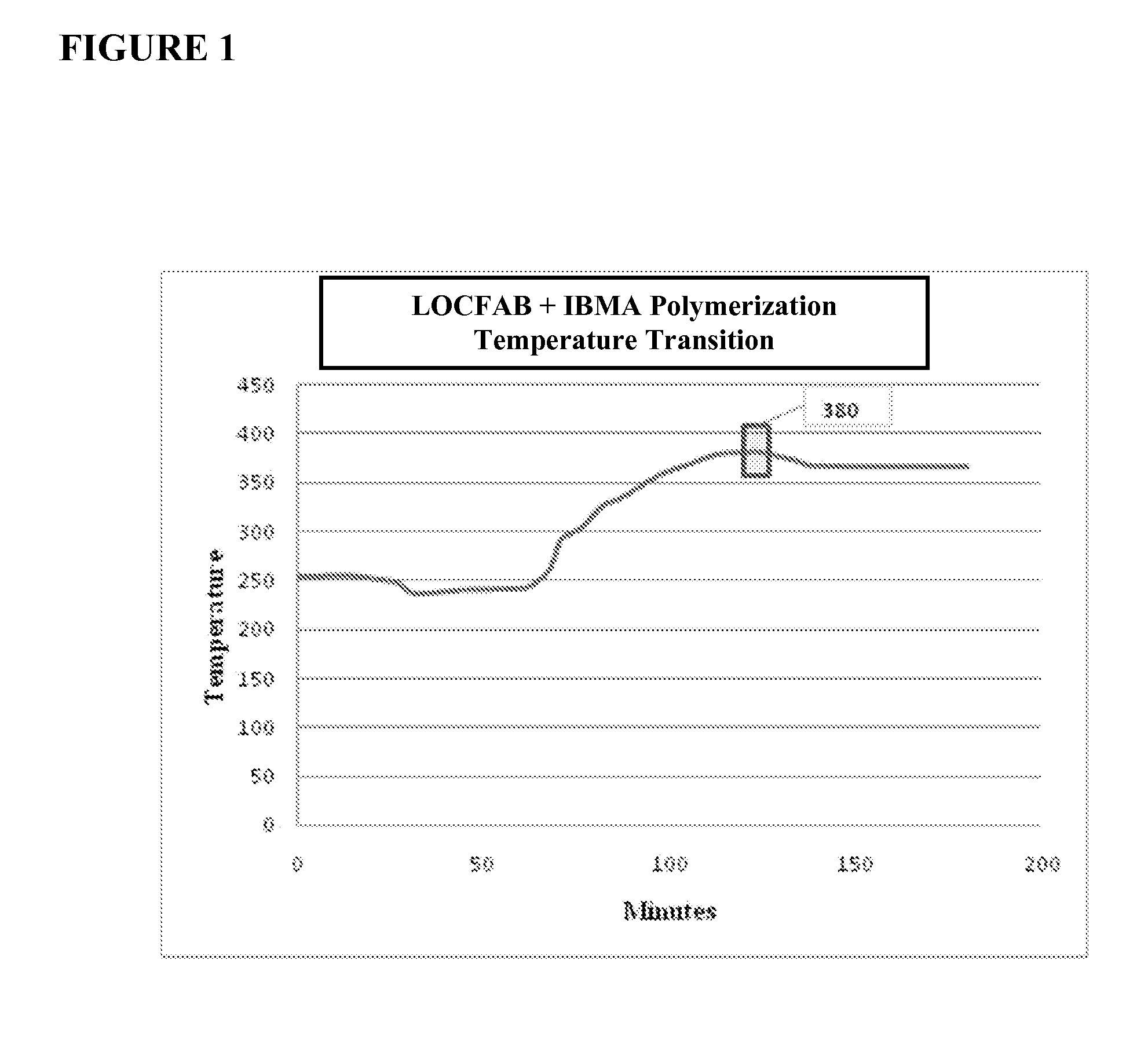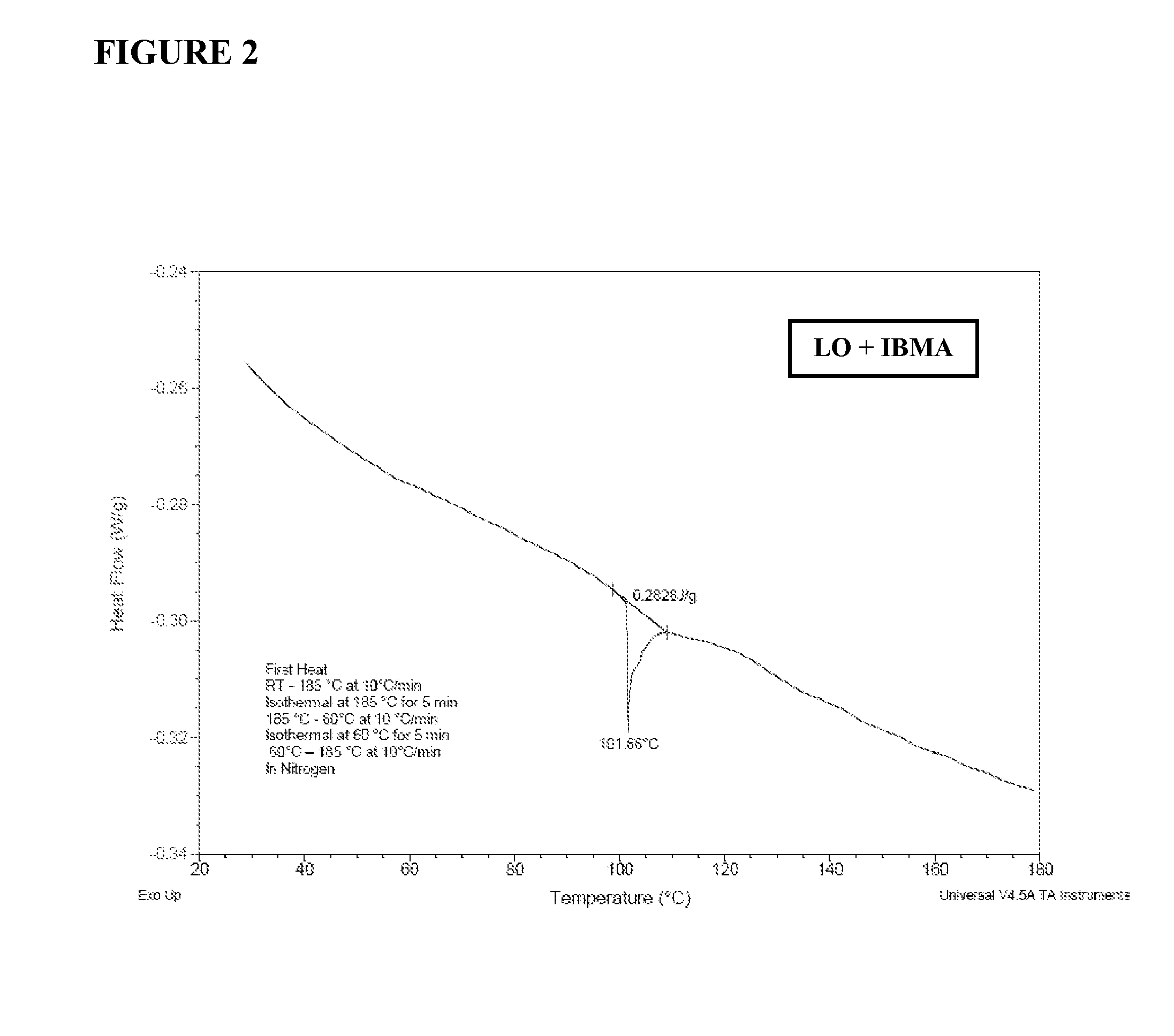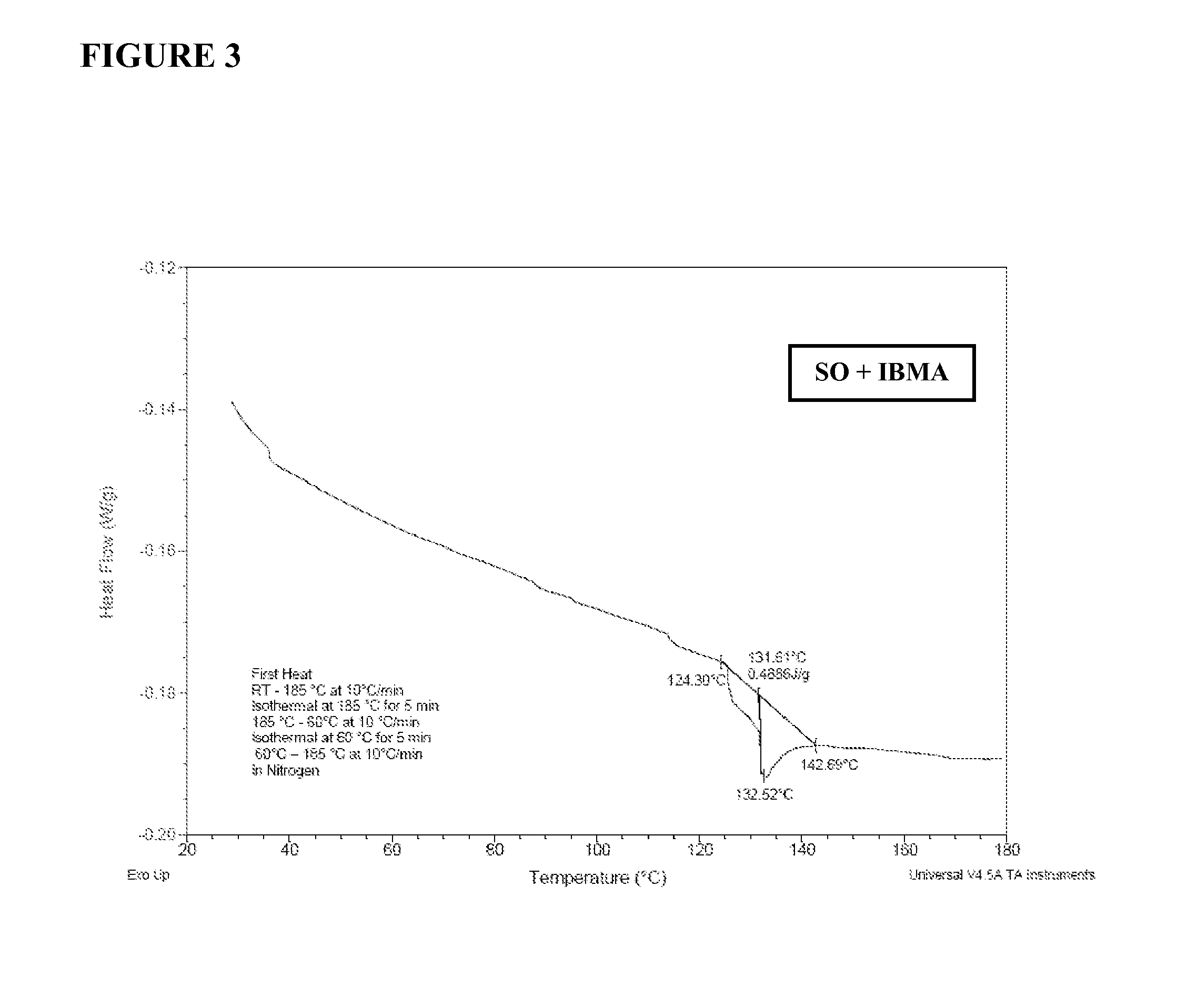Process for producing compositions for use in removal of dispersed, solubilized, and/or emulsified undesired species from water and gases
- Summary
- Abstract
- Description
- Claims
- Application Information
AI Technical Summary
Benefits of technology
Problems solved by technology
Method used
Image
Examples
example 1
Cleavage Reactions
[0027](a) Isolation of Fatty Acids from Linseed Oil.
[0028]200 g of linseed oil and 38.27 g of potassium hydroxide was charged in a beaker with magnetic stirrer, heated and stirred continuously at 80-85° C. for about one hour. After the saponification was complete (thickening and formation of visible glycerin layer), the mixture was cooled in water bath and filtered to separate the soap from the glycol. The pH of the soap was around 10. The soap was acidified with concentrated hydrochloric acid to pH 4. Acidification of the soap springs free fatty acid with potassium chloride by product. The fatty acids were separated from the salt by decanting. Samples of the blend of fatty acids were then subjected to GS / MS (gas chromatography / mass spectrometry) and FAME (fatty acid methyl ester) analysis.
[0029]An off-the-shelf (“OTS”) commercial linseed oil was subjected to analysis to provide comparison data. The result is shown in Table A below:
TABLE AContent of methyl esters i...
example 2
Synthesis of Thermal Reaction Product of Isobutyl Methacrylate and Linseed Oil Constituent Fatty Acid Blend
[0042]259 g of linseed oil constituent fatty acid blend (“LOCFAB”) was charged to a three neck round bottom flask, equipped with glass agitator, reflux condenser, thermometer and nitrogen purge line and heated with heating mantle to 250° F. at a rate 3 degree F. per minute. When the temperature reached 250° F., 95 g of isobutyl methacrylate was added. The mixture was heated until a temperature range 385° F. with temperature readings recorded every 2 minutes. The mixture remained at this temperature even though heating continued (indicating endothermic phase transition) and yielded a clear pill. The heat setting was kept constant. The temperature was monitored every two minutes and a plot was generated of temperature vs. time (FIG. 1).
[0043]A major endothermic event occurred at 380 degrees Fahrenheit where a temperature drop occurred and the temperature ceased to rise indicating...
example 3
Performance Testing of Reaction Products
[0060]Cellulose based tissue paper was infused with each one of the previously mentioned thermal reaction products and the polymer was caused to cure. The infused tissue paper was shredded into uniform small pieces. Two 400 mL beakers were charged with 200 mL of water and two grams of crude oil. 0.2 Grams of linseed oil (LO)+IBMA treated tissue paper were added to one beaker and 0.2 grams of linseed constituent fatty acids blend (LOCFAB)+IBMA were added to the second beaker. The beakers were agitated with a glass stirring rod causing the oil to form a cohesive mass in conjunction with the treated tissue paper. The coagulated tissue paper oily mass was removed and a solvent extraction was performed on each of the beakers with 20 mL of trichlorotrifluoroethane in a separatory funnel. The trichlorotrifluoroethane fraction was separated and analyzed on an infrared spectrometer for absorbance. The LO+IBMA sample had a total absorbance of 1344. The ...
PUM
| Property | Measurement | Unit |
|---|---|---|
| Temperature | aaaaa | aaaaa |
| Viscoelasticity | aaaaa | aaaaa |
| Iodine number | aaaaa | aaaaa |
Abstract
Description
Claims
Application Information
 Login to View More
Login to View More - R&D
- Intellectual Property
- Life Sciences
- Materials
- Tech Scout
- Unparalleled Data Quality
- Higher Quality Content
- 60% Fewer Hallucinations
Browse by: Latest US Patents, China's latest patents, Technical Efficacy Thesaurus, Application Domain, Technology Topic, Popular Technical Reports.
© 2025 PatSnap. All rights reserved.Legal|Privacy policy|Modern Slavery Act Transparency Statement|Sitemap|About US| Contact US: help@patsnap.com



